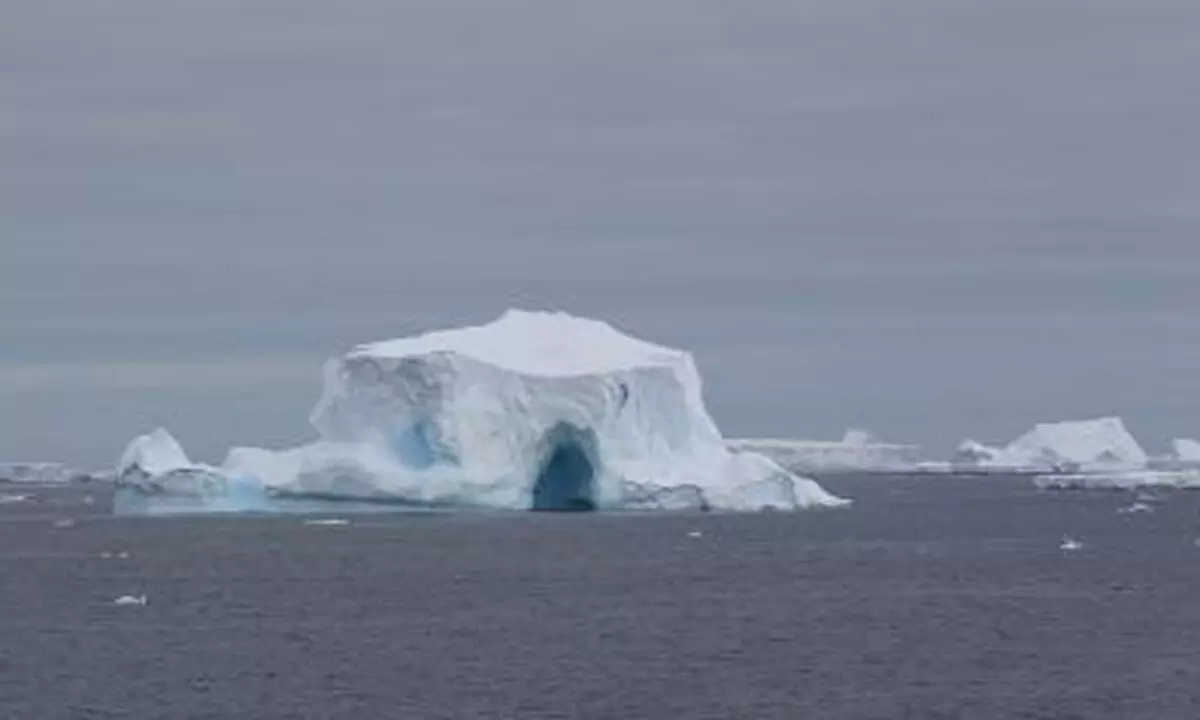New AI model can map giant icebergs 10,000 times faster than humans: Study
Share :

A team of British scientists have trained an Artificial Intelligence (AI) system to accurately map -- in one-hundredth of a second -- the surface area and outline of giant icebergs captured on satellite images.
London: A team of British scientists have trained an Artificial Intelligence (AI) system to accurately map -- in one-hundredth of a second -- the surface area and outline of giant icebergs captured on satellite images.
It is a major advance on existing automated systems which struggle to distinguish icebergs from other features in the image.
Manual - or human - interpretation of the image is more accurate but it can take several minutes to delineate the outline of a single iceberg.
If that has to be repeated numerous times, the process quickly becomes time-consuming and laborious, said the team from the University of Leeds, UK.
“Icebergs exist in hard-to-reach parts of the world and satellites are not only a fantastic tool to observe where they are, they can help scientists understand the process of how they melt and eventually begin to break apart,” said Dr Anne Braakmann-Folgmann, who led the study while undertaking doctoral research at the Centre for Polar Observation and Monitoring at the University of Leeds.
“Using the new AI system overcomes some of the problems with existing automated approaches, which can struggle to distinguish between icebergs and other ice floating on the sea or even a nearby coastline, which are present in the same image,” she added.
The team used an algorithm called U-net – a type of neural network -- to “train” a computer to accurately map the outline of icebergs from images taken by Sentinel-1 satellites operated by the European Space Agency.
As part of the study, the effectiveness of the U-net algorithm was compared to two other state-of-the-art algorithms used to map icebergs.
They are known as k-means and Otsu. The algorithms were programmed to identify the biggest iceberg in a series of satellite images.
The system has been tested on satellite images of seven icebergs, which were all between the size of the city of Bern - 54 km2; and Hong Kong - 1052 km.
For each of these icebergs, up to 46 images were used that covered all seasons, from 2014-2020.
Over a series of tests, U-net outperformed the other two algorithms and was more effective in delineating the outline of an iceberg in images taken when environmental conditions were challenging, such as the image capturing a lot of ice structures.
On average, the U-net algorithm showed only a 5 per cent lower estimate of the area of an iceberg.
In contrast, the k-means and Otsu algorithms returned, on average -- figures for iceberg areas that were 150 per cent to 170 per cent too large, probably because the algorithms including sea ice and even nearby coastline in the calculations.
"This study shows that Machine Learning will enable scientists to monitor remote and inaccessible parts of the world in almost real-time. And with Machine Learning, the algorithm will become more accurate as it learns from errors in the way it interprets a satellite image,” said Andrew Shepherd, Professor at the University of Northumbria in the UK.



















